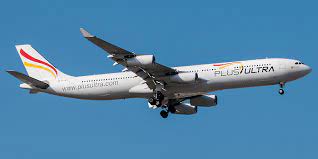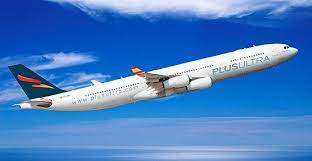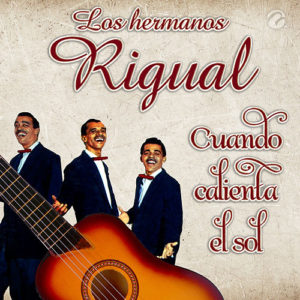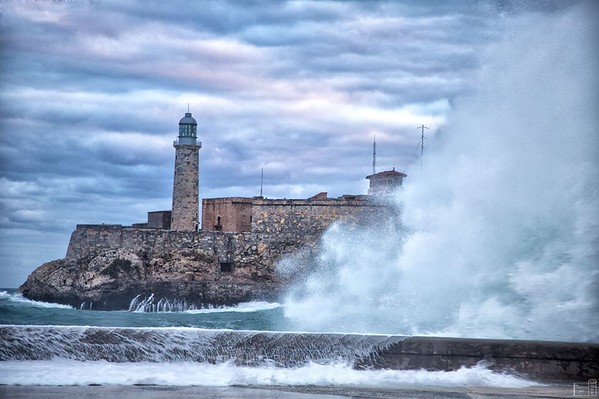THE OLD SOVIET “LADAS” CARS IN CUBA, A RELIC OF THE PAST ON THE ISLAND TODAY. PHOTOS..
THE OLD SOVIET “LADAS” CARS, uncomfortable, wasteful, rustic. Today it is common to see in Cuba the owners of the old Russian Ladas standing next to the raised hood and clutching their heads because they were stranded on any corner. That is the Cuban reality today.
But for all their flaws, these cars arouse passions, constitute the island’s most visible Soviet-era legacy, and are a status symbol to their owners, who must sometimes perform engineering miracles to keep them moving.
Despite the fact that their owners must perform engineering miracles to keep them moving, sometimes at a high monetary cost, the old Lada cars unleash passions in Cuba and constitute the most visible legacy of the Soviet era on the island.
THE SIDES ARRIVE IN CUBA
The first Ladas arrived in Cuba in the late 1960s and early 1970s, Willy Hierro Allen, a mechanic, and transportation specialist who directs the magazine ‘Excelencias del Motor’, explained to AP.
At the end of the 1950s, Cuba was one of the countries on the continent with the highest number of vehicles per inhabitant, and old Ford, Pontiac or Chevrolet passed through the island, which still rolls and gives Havana that old look.
But after the triumph of the socialist revolution in 1959 and in the heat of the confrontation with the United States, spare parts began to lack and the importation of vehicles was completely paralyzed.
After the imposition of sanctions by Washington, Seat and Alfa Romeo arrived, like the one used by former President Fidel Castro. But when the country approached the Soviet Union and joined the Council for Mutual Economic Assistance – the common market created by the socialist nations – the Ladas began to arrive for a ride and some jeep-type units – although these were given military use.
To a lesser extent, Russian Moskvitch and Polish Polski Fiat were imported.
The Russians stopped making that model in September 2012, although they maintained a production line in Egypt until 2015.
RELICS OF THE PAST
The Ladas for a ride was converted into thousands of taxis, they were distributed in public buildings; or they were offered to the leaders of the Communist Party and the government, to the outstanding workers, and to some personalities who were granted the right to buy them.
The authorities never made public the number of the Cuban vehicle fleet, estimated by experts in some 20,000 classic American cars and more between 80,000 and 100,000 Lada, in a nation with 11.3 million inhabitants. The World Bank estimated that there were 38 motor vehicles – including buses – per 1,000 residents in 2008.
Starting in the 90s, Toyota, Peugeot, and Kia units were incorporated for tourism, among other brands, which after being used in the rental companies were put up for sale or were delivered to the state sector. At the same time, new Ladas for corporate use and Geely Chinese with modern design and advanced mechanics entered, which in general are not very popular.
A Lada 2107 of the last that was made until discontinued by the Russian firm AutoVaz at the end of the last decade can cost between 20,000 and 25,000 dollars, a fortune on the island that has an average salary of 150 dollars, but little compared to the 60,000 that the State asks for the used ones that it takes out of the tourism rent.
Maintenance costs are added to the purchase cost: the owners of the Ladas have to manage to bring spare parts from Russia, Panama and even Miami through mules or, in the worst case, make them by hand.
For this reason, the owners of the Lada are aware of the symbolic and economic value of their vehicles and strive to keep them in good condition.
CREATION OF A “CLUB LADA”
At the end of last year, a handful of owners of these vehicles decided to form the Lada Cuba Club and in less than four months – despite the limitations of the new coronavirus pandemic – they already have about 140 members who meet for social activities such as donating blood. , lean on when someone has a mishap -even a crash- or simply exchange tricks and spare parts.
“It has always been said that the Lada is the Cuban’s car,” Carlos Rodríguez, a 29-year-old craftsman who runs the club, told The Associated Press. “Every week we get together, even if it’s just to talk‘ look, I did this little new trick on the bomb ’and we all help each other.”
A few days ago, Rodríguez with his white Lada 2106 manufactured in 1985 – seven years before he was born – and about 50 owners with their respective vehicles found themselves in a scrubber in the Marianao neighborhood. They gave their units a collective bath, talked about mechanics, joked, and showed each other’s progress before they all went out together honking to a park on the outskirts of Havana. “I’m proud,” Rodriguez said, glancing at his white Lada. “I take care of him as if he were my son.”
The Lada Cuba Club has around 140 members who meet for social activities, such as donating blood or helping each other when one of the cars breaks down.
A tour of Cuban cities is enough to see that there are no traffic jams or rush hours. As there is such a small private market – because state vehicles cannot be sold to citizens – the few existing cars become precious and expensive objects.
THE STORE IN MIAMI WHERE “THE CUBANS” BUY LADAS SPARE PARTS
Cars as rudimentary, simple, and old as the Soviet-made Ladas may seem out of place among the glitzy models on the streets of Miami, USA.
But in this city, there is a business that sells spare parts of that and other Soviet Union brands, and that works very well.
Zakharov Auto Parts serves customers who take the parts to relatives in Cuba, where Soviet cars are the ones that circulate the most on the island’s roads even today.
LOS VIEJOS “LADAS” SOVIETICOS EN CUBA, UNA RELIQUIA DEL PASADO EN LA ISLA HOY. PHOTOS..
LOS VIEJOS AUTOS “LADAS” SOVIETICOS, incómodos, gastadores, rústicos. Hoy es común ver en Cuba a los dueños de los añejos Lada rusos parados junto al capó levantado y agarrándose la cabeza porque quedaron varados en cualquier esquina. Esa es la realidad cubana hoy.
Pero a pesar de todos sus defectos estos automóviles despiertan pasiones, constituyen el más visible legado de la era soviética en la isla y son un símbolo de estatus para sus propietarios, que a veces deben hacer milagros de ingeniería para mantenerlos en movimiento.
Pese a que sus propietarios deben hacer milagros de ingeniería para mantenerlos en movimiento, a veces a un alto costo monetario, los viejos automóviles Lada desatan pasiones en Cuba y constituyen el más visible legado de la era soviética en la isla.
LLEGAN LOS LADAS A CUBA
Los primeros Lada llegaron a Cuba a fines de los años 60 y comienzos de los 70, explicó a AP Willy Hierro Allen, mecánico y especialista en transporte que dirige la revista ‘Excelencias del Motor’.
A fines de los años 50, Cuba era uno de los países del continente con mayor cantidad de vehículos por habitante y por la isla transitaban antiguos Ford, Pontiac o Chevrolet, que aún ruedan y le dan ese aspecto antiguo a La Habana.
Pero tras el triunfo de la revolución socialista en 1959 y al calor del enfrentamiento con Estados Unidos los repuestos comenzaron a faltar y la importación de vehículos se paralizó por completo.
Tras la imposición de sanciones por parte de Washington arribaron Seat y Alfa Romeo, como el que usaba el expresidente Fidel Castro. Pero cuando el país se acercó a la Unión Soviética e ingresó al Consejo de Ayuda Mutua Económica -el mercado común creado por las naciones socialistas- comenzaron a arribar los Lada de paseo y algunas unidades tipo jeep —aunque a estos se les dio uso militar—.
En menor medida se importaron Moskvitch rusos y Polski Fiat de Polonia.
Los rusos dejaron de fabricar ese modelo en septiembre de 2012, aunque mantuvieron una línea de producción en Egipto hasta el 2015.
RELIQUIAS DEL PASADO
Los Lada de paseo fueron convertidos en miles de taxis, se los distribuyó en las dependencias públicas; o se les ofreció a los dirigentes del Partido Comunista y el gobierno, a los trabajadores destacados y a algunas personalidades a las que se le otorgó el derecho a comprarlos.
Las autoridades jamás hicieron pública la cifra del parque vehicular cubano, estimada por expertos en unos 20.000 automóviles clásicos estadounidenses y más entre 80.000 y 100.000 Lada, en una nación con 11,3 millones de habitantes. El Banco Mundial estimó que había 38 vehículos de motor —incluye autobuses— por 1.000 residentes en 2008.
A partir de los años 90 se incorporaron para el turismo unidades de Toyota, Peugeot y Kia, entre otras marcas, que luego de ser usadas en las arrendadoras se ponían a la venta o se entregaban al sector estatal. A su vez ingresaron nuevos Lada para uso corporativo y chinos Geely con diseño moderno y mecánica avanzada, que por lo general no son muy populares.
Un Lada 2107 de los últimos que se fabricaron hasta ser discontinuados por la firma rusa AutoVaz a fines de la década pasada puede costar entre 20.000 y 25.000 dólares, una fortuna en la isla que tiene un salario promedio de 150 dólares, pero poco en comparación con los 60.000 que el Estado pide por los usados que saca de la renta al turismo.
Al costo de compra se suma el de mantenimiento: los dueños de los Lada se las tienen que arreglar para traer a través de mulas repuestos de Rusia, Panamá y hasta Miami o, en el peor de los casos, fabricarlos artesanalmente.
Por ello los dueños de los Lada son conscientes del valor simbólico y económico de sus vehículos y se esfuerzan por tenerlos en condiciones.
CREACION DE UN “CLUB LADA”
A fines del año pasado un puñado de dueños de estos vehículos decidieron formar el Club Lada Cuba y en menos de cuatro meses -pese a las limitaciones de la pandemia del nuevo coronavirus- ya tienen unos 140 miembros que se reúnen para actividades sociales como donar sangre, apoyarse cuando alguno tiene un percance -incluso un choque- o simplemente intercambiar trucos y repuestos.
“Siempre se ha dicho que el Lada es el carro del cubano”, dijo a The Associated Press Carlos Rodríguez, un artesano de 29 años que dirige el club. “Todas las semanas nos juntamos, aunque sea para conversar ‘mira le hice este truquito nuevo a la bomba’ y nos ayudamos entre todos”.
Hace unos días, Rodríguez con su Lada blanco 2106 fabricado en 1985 -siete años antes de que él naciera- y unos 50 dueños con sus respectivos vehículos se encontraron en una fregadora en la barriada de Marianao. Les dieron un baño colectivo a sus unidades, hablaron sobre mecánica, bromearon y mostraron los adelantos de uno y otro antes de salir todos juntos dando bocinazos hasta un parque en las afueras de La Habana. “Me siento orgulloso”, dijo Rodríguez mirando de reojo su Lada blanco. “Yo lo cuido como si fuera mi hijo”.
El Club Lada Cuba tiene alrededor de 140 miembros que se reúnen para realizar actividades sociales, como donar sangre o ayudarse cuando se descompone uno de los carros.
Basta un recorrido por las ciudades cubanas para ver que no hay atascamientos de tráfico ni horas pico. Al existir un mercado particular tan reducido -porque los vehículos estatales no pueden ser vendidos a los ciudadanos-, los pocos automóviles existentes se convierten en objetos preciados y costosos.
LA TIENDA EN MIAMI DONDE COMPRAN PIEZAS DE “LADAS CUBANOS”
Autos tan rudimentarios, simples y antiguos como los Ladas, de fabricación soviética, pueden parecer fuera de lugar entre los modelos ostentosos que circulan por las calles de Miami, Estados Unidos.
Pero en esta ciudad hay un negocio que vende piezas de repuesto de esa y otras marcas de la Unión Soviética y que funciona muy bien.
Zakharov Auto Parts atiende a clientes que llevan las piezas a familiares en Cuba, donde los autos soviéticos son los que más circulan aún hoy por las carreteras de la isla.
Agencies/ AP/ Andrea Rodriguez/ BBC/ Extractos/ Excerpts/ Internet Photos/ Arnoldo Varona/ VIDEOS – PHOTOS> LA HISTORIA DE CUBA
THE CUBAN HISTORY, HOLLYWOOD.


























